The post Sanitary Security And Inspections For Food Industry appeared first on Adamant Valves.
]]>
There are definite and specific sanitary standards for every step during food and beverage preparation. In regard to the processing equipment (including sanitary pipes, sanitary pumps, sanitary valves, sanitary fittings, etc.), they should be designed and manufactured according to respective sound sanitary standards and fully cleaned and sanitized before operation.
The materials should be protected all the way (including the transport) from all kinds of contamination sources, biotic or abiotic.
Fortunately, consumers can now much more easily find out if their local deli properly prepares meats and cheese or if their convenience stores carry expired foods.
The Michigan Department of Agriculture and Rural Development (MDARD) recently published an online database of food inspection reports for more than 19,000 grocery and convenience stores, food processors, and food warehouses licensed by the state.
Inspections are typically conducted every 6, 12, or 18 months, depending on the facility. According to MDARD, violations are items that may lead to, if not addressed, foodborne illness, food contamination, or an environmental health hazard. The compliance rate of Michigan is 90% ~ 95%, and MDARD works to bring those stores of violations into compliance with the state’s food law, according to department spokeswoman Jennifer Holton.
The website does not include inspections for restaurants, schools, and hospitals, which are handled by the state’s 45 local health agencies.
The inspection results of these establishments and organizations are available online from health agencies in Barry, Calhoun, Eaton, Genesee, Ingham, Jackson, Kalamazoo, Kent, Livingston, Macomb, Muskegon, Ottawa, Washtenaw, and Wayne counties, along with Detroit and the western Upper Peninsula.
The post Sanitary Security And Inspections For Food Industry appeared first on Adamant Valves.
]]>The post Sanitary Diaphragm Valves for Medicine appeared first on Adamant Valves.
]]>A sanitary diaphragm valve is considered a highly hygienic valve due to its mode of operation. This technique is called “input from above.” The upper inlet facilitates the welding and extraction of the clamps during the maintenance of the valve.
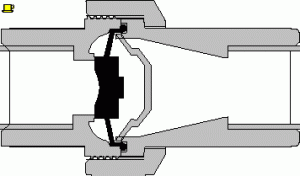
Sanitary diaphragm valves in the pharmaceutical industry
Sanitary diaphragm valves are the preferred choice of valves used in the pharmaceutical industry. This is due to its well-known characteristic of being very clean. They are ideal for applications where strangulation, unobstructed flow, and positive shutdown are required for sensitive and ultrapure media. These means are found in the pharmaceutical industry. Sanitary diaphragm valves are the only truly hygienic flow valves for applications in the pharmaceutical industry. The rest of the appropriate valves have 90-degree settings.
How Does the sanitary diaphragm valve work for medicine?
The sanitary diaphragm valve works by isolating the treatment medium from its surroundings and from all the moving parts of the valve. In this way, it successfully protects the contamination from media, thus guaranteeing the continuous operation of the valve without interruption.
Sanitary diaphragm valves have the following advantageous qualities: vapor resistance, high durability, flexibility for maintenance, as well as being quite clean and hygienic. They also have some other features. The sanitary diaphragm valve can be electronically polished to achieve a beautiful and better surface finish.
When mounted in line with a two-degree tilt angle, the valve is automatically vented. The body of the sanitary diaphragm valve has no trapping zones. They have their body mainly of forged 316L stainless steel. The main difference between the molding materials and the forged pieces is that the molded materials are more porous than the forged materials. Since the valves are made of forged materials, the porosity of the materials allows the valves to be polished to finishes up to 10 Ra.
As “top-entry” valves, sanitary diaphragm valves can be welded to the desired location and their seals can be easily removed from the system. In fact, the diaphragms and covers of these diaphragm valves can be worked during maintenance without having to remove the valve body from the treatment lines. The sanitary diaphragm valve body has a unique design called a unique weir design. This simple but important design allows the valves to be configured and configured in addition to a single block valve. Individual blocks can be customized for specific or specific applications.
The post Sanitary Diaphragm Valves for Medicine appeared first on Adamant Valves.
]]>The post The Application of Valve Balls appeared first on Adamant Valves.
]]>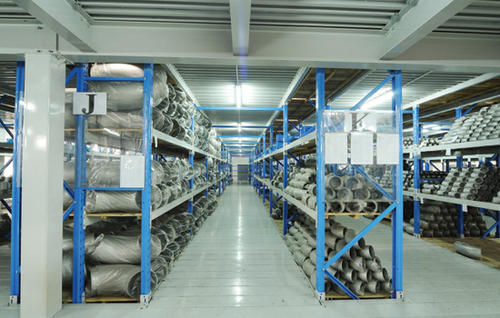
Due to the fact that the sealing ring of the valve seat of the valve ball is usually made of plastics, so one has to consider the fireproof performance of sanitary ball valves When choosing the structure and performance.
When using ball valves in equipment and pipelines that contain flammable and explosive mediums, one should pay even more attention to the fire.
Valve balls are suitable for low-pressure shut-off, light structure, and corrosive media pipeline systems. They can also be used in low-temperature devices and pipeline systems.
In the metallurgical industry’s oxygen pipeline system, valve balls need to undergo strict degreasing treatment when in use. When the main pipelines of oil pipelines and gas pipelines need to be buried underground, full-diameter welded valve balls need to be used. When there needs to be a regulating performance, a special structure of the valve ball with V-shaped openings needs to be used.
The post The Application of Valve Balls appeared first on Adamant Valves.
]]>The post How Sanitary Pumps Work in Beverage Industry appeared first on Adamant Valves.
]]>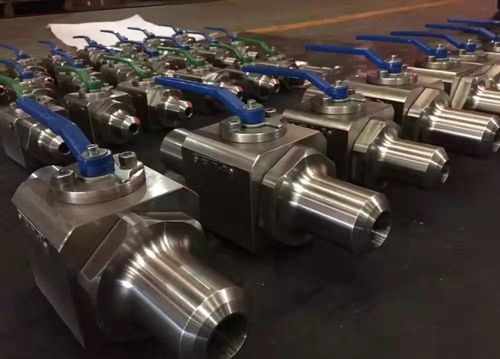
Sanitary pumps manufacturers have ensured that they have instilled the best practices to manufacture the most quality pumps that can be efficiently used in beverage industries. They have considered the latest technology that is highly efficient to meet all its clients’ demands and expectations.
This technology venture has ensured that you as a customer get sanitary pumps that are manufactured under the current legal obligations and use the most standardized materials that maximize your output and your machine’s performance.
The sanitary pumps manufacturers have considered the different types of pipes used in beverage industries and for this reason, they have designed suitable end connections that can match up with almost any standard pipe. The end connections can be tri-clamped, butt welded, and threaded enabling the pump to connect well with the pipe with minimal chances of leakage.
The temperature specifications are set in a way in which the pump functions well under various temperature ranges. This minimizes the chances of freezing or melting enabling maximum performance. The manufacturer customizes the use option to reach out to more industries, the pump can be used manually or use pneumatic actuator and electric actuator interchangeably.
The various pump series vary in size, type of end connections, pressure, and use ranging from different pipes containing foods, pharmaceutical products, and beverages among others.
The beverage industry is a sensitive field that requires maximum care and standard practices in all stages, the manufacturers understand this and comply on their part by enhancing all the features of the pump and by ensuring they use the required materials. Their effort is evidenced in the general outlook of the pump, the capacity, and the durability of the sanitary pumps.
The post How Sanitary Pumps Work in Beverage Industry appeared first on Adamant Valves.
]]>The post The Use of Regulating Valve in Heating Pipe Network appeared first on Adamant Valves.
]]>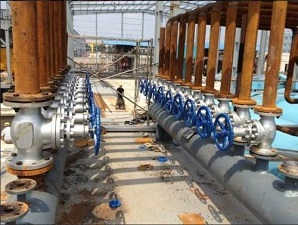
Due to the different resistance between loops and the relations between the coupling, the transmission and distribution of the flow are hard to balance and regulate, leading to such problems as poor quality of the running system, inaccurate and unstable flow regulation, uneven temperature at the user end, being forced to use large flow operation and serious energy waste. The main reason is the use of flow regulation equipment that is of poor quality, unreliable, easy to use, and of low cost.
A constant flow sanitary regulating valve is the regulating equipment specifically designed to overcome the above problems. It can accurately and reliably regulate, transmit and distribute the flow, eradicating the problem and hydraulic imbalances.
In the circulating water pipe network system of centralized water supply or central air conditioning, a constant flow regulating valve is installed on every loop in the user end.
Set the opening degree according to the users’ rated flow, and we can achieve a balanced transmission and distribution of the entire pipe network system, ensure the balance and stability of the transmission and distribution of the flow of the system, and improve the quality of operation and achieve energy-saving operation. There is no need for specialized debugging technology and meters.
The setting of the regulation is simple and intuitive, fast and reliable. In the building automation system of centralized heating or central air conditioning, a constant flow regulating valve equipped with the valve actuator can ensure the stability, accuracy, and reliability of regulation of system flow, improve the quality of operation, reduce the number of action by valve actuator to extend its service life.
According to the relevant information, in a central heating system, reasonable and balanced transmission and distribution of the flow can save electricity and coal by more than 15-20% respectively after achieving hydraulic balance.
Since the problem of imbalanced transmission and distribution of flow in the heating pipe network is solved, the room temperature of end users that can’t receive heat for a long time reaches standards. This can reduce user complaints, increase the toll rate, give full play to the existing boiler water pump, and expand the heating area. The economic and social benefits are very impressive.
The post The Use of Regulating Valve in Heating Pipe Network appeared first on Adamant Valves.
]]>The post How to Select Valves in the Water Supply Network? appeared first on Adamant Valves.
]]>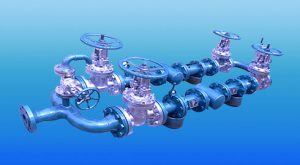
Safety of water supply
Not affecting water quality is an important indicator of valve selection. The direct contact between the valve and water is mainly the inside of the valve body, sealing part, valve plate, etc.
At present, many manufacturers use rubber material for the sealing part of the valve. These rubbers are synthetic rubber, which needs to add more than a dozen raw materials and anti-aging agents to the natural rubber during the synthesis process.
Whether the final rubber can be used to seal water supply valves must be seen whether the rubber is non-toxic and meets the hygienic standards for drinking water. As for the inside of the valve and the valve plate and other parts, many manufacturers used to take the method of painting, and they only consider the rust prevention problem without considering whether toxic. In practice, we found that the anti-corrosion problem of pipeline lining in the water supply pipe network was solved; however, the value of the pipe network has no inner liner.
Due to the precipitation of water and the corrosion and deposition of iron bacteria in the water on the valve cavity and valve plate, some valve body inner walls have hilly accumulation, which not only affects the water quality of water supply but also is one of the main reasons why some valves are not closed strictly.
Therefore, we require that all the parts in direct contact with water should be sprayed with non-toxic paint, preferably with non-toxic epoxy powder by electrostatic spraying. When selecting valves, we should first check for non-toxic proof and inspection certificates of rubber and paint. Only those valves with the above conditions can ensure the water quality is not polluted and the security of the water supply can be guaranteed.
The advancement of technology
Valve technology has been evolving, for example, from old-fashioned gate valves to soft-seal ones; from the original butterfly valve to the sandwich butterfly valve, single eccentric, double eccentric flange butterfly valve, hard sealing butterfly valve; from the traditional single-head exhaust valve to high-speed double-port exhaust valve. When selecting a valve, you also need to consider whether the selected valve is advanced.
Water tightness
Whether the valve acts as a seal is a basic requirement for the valve. There are many types of seal in practical application, such as soft seal, hard seal, disc seal, body seal, surface seal, line seal, etc.No matter what kind of seal is used, the sealing effect cannot be affected. When selecting a valve, it is important to pay attention to the sealing form of the valve and check the sealing effect of the valve according to its practical application.
Operational flexibility
The flexible operation of the valve is not only reflected in which transmission mode to choose but also in the machining precision of components related to the transmission mechanism. The selection of transmission mode should be based on the situation of water supply enterprises and operators’ opinions, which allows the selected valve to operate flexibly and meet the needs of use and operation.
The post How to Select Valves in the Water Supply Network? appeared first on Adamant Valves.
]]>The post New Sanitary Valve with EPDM and PTFE Diaphragm for Fine Chemicals appeared first on Adamant Valves.
]]>Sanitary Valves are found in virtually every industrial process, including food manufacturing, chemical, pharmaceutical, brewery, and many other fields. There was a growing concern in the industry as toluene corrodes the EPDM rubber easily. This in turn will cause the valve to leak and damage the pipeline and system. While every spill has different consequences, it all boils down to increasing waste and pollution. Not to mention the environmental cost and effects on employees from the possible harmful chemicals pumped through the valves.
Mike Lee from Adamant Valves said “we are thrilled to introduce this new product because pure EPDM+PTFE diaphragm is really the best choice for fine chemicals. Most of the sanitary diaphragm valves currently use pure EPDM or compound EPDM+PTFE material, which does not work well for the fine chemical industries as they cause corrosion and leakage”. Adamant Valves has solved this problem by offering a pure EPDM+PTFE diaphragm that works well under a toluene medium. The PTFE material is 0.8mm thicker than the industry standard, therefore ensuring a better sealing for fine chemicals.
Features of the EPDM and PTFE Diaphragm include:
EPDM (ethylene propylene diene monomer) is a varox-cured material that is commonly used in pharmaceutical and biotech applications. The material is non-cytotoxic and sulfur-free.
PTFE is a Polytetrafluoroethylene, a thermoplastic resin that is virtually resistant to all fluids, including chemicals.
Adamant Valves have combined these two materials, making the PTFE seal thicker to protect the EPDM rubber from fine chemical corrosion. This double seal will not only counteract the materials drawbacks but will also protect the valve and pipeline from leakage, cut the time and cost of maintenance, and increase the operational life.
The post New Sanitary Valve with EPDM and PTFE Diaphragm for Fine Chemicals appeared first on Adamant Valves.
]]>The post The Introduction of Ball Valve Applications appeared first on Adamant Valves.
]]>Since the ball valve usually uses rubber, nylon, and PTFE as sealing ring materials of the valve seat, its operating temperature is limited by the sealing ring materials of the valve seat. The shut-off effect of the sanitary ball valve is achieved by a metal sphere pressing tight against the plastic valve seat under the effect of the medium. Under certain contact pressure, part of the sealing ring of the valve seat has plastic deformation. This kind of deformation can compensate for the manufacturing precision and surface roughness of the sphere, ensuring the sealing performance of the ball valve.
Since the sealing ring of the ball valve seat is usually made of plastics, when choosing the structure and performance of the ball valve, the fire resistance and fire-proof need to be considered, especially in petroleum, chemical, metallurgical and other departments. When using ball valves in equipment and pipeline systems of flammable, explosive media, fire resistance and fire-proof should be paid more attention to.
In general, ball valves are recommended to be used in pipeline systems of double-position regulation, strict sealing performance, mud, wear, necking channel, quick opening, and closing, high-pressure shut-off, low noise, cavitation and gasification, small leakage to the atmosphere, small operating torque, small fluid resistance.
Ball valves are also suitable in pipeline systems of light structure, low-pressure shut-off, corrosive medium. Ball valves can also be used in low-temperature devices and pipeline systems. In the oxygen pipeline systems of the metallurgical industry, ball valves that have been through strict degreasing treatment need to be used.
When the main pipeline needs to be buried underneath the ground in oil pipelines and gas pipelines, full diameter welded ball valves need to be used. When there’s a requirement for regulating performance, special ball valves with V-shaped openings need to be used. In oil, petrochemical, chemical, electric and urban construction, metal-to-metal sealing ball valves can be used in pipelines with operating temperatures of over 200 degrees Celsius.
What are the types of ball valves?
There are five general body styles of ball valves: single body, three-piece body, split body, top entry, and welded. The difference is based on how the pieces of the valve—especially the casing that contains the ball itself—are manufactured and assembled. The valve operation is the same in each case.
Conclusion
Ball Valves are used for flow and pressure control and shut off for corrosive fluids, slurries, normal liquid, and gases. They are used in the oil and natural gas industry, but also find a place in many manufacturing sectors, chemical storage, and even residential uses.
The post The Introduction of Ball Valve Applications appeared first on Adamant Valves.
]]>The post Pure Water of Medical Institution Polluted by Microorganism appeared first on Adamant Valves.
]]>However, there is internal pollution in the operation of pure water equipment. Internal pollution is closely related to the design, material selection, operation, maintenance, storage, and use of water pollution control systems.
All kinds of water treatment equipment may become internal pollution sources of microorganisms. For example, microorganisms in raw water are adsorbed on the surface of activated carbon, deionized resin, reverse osmosis membrane, and other equipment to form biofilms, while microbes living in biofilms are protected by biofilms, and generally, disinfectants do not work on them.

Another source of pollution exists in the distribution system. During the daily operation of the storage tank and conveying pipeline in the pure water pipeline system, a small number of microbes will flow along with the water flow and attach to some sanitary valves and pipes to reproduce.
Microbes can create colonies on pipe surfaces, valves, and other areas and multiply there, forming biofilms that can become persistent sources of pollution, which can lead to secondary contamination of purified water through pipes and excessive numbers of microbial colonies of purified water in medical facilities.
The above two situations are the most important reasons for the super standard of pure water microorganisms. Then how should we control the super standard of pipeline microorganisms in pure water equipment?
In a pure water treatment system, the pipeline system consists of the sanitary pump, online disinfection system, periodic disinfection system, pipeline, sanitary valve, various sensors and water points, water tanks, exchange columns, and various filters, membranes, and pipes in which will constantly breed bacteria.
Sterilization methods provide the ability to remove bacteria and microorganisms, but none of which can eliminate all bacteria and water-soluble organic pollution in a multistage water treatment system.
At present, the best way to continuously remove bacteria and viruses in high-purity water systems is to use silver peroxide ion compound sterilization. In the pure water treatment scheme, only 20-30ppm per ton is required to effectively and completely kill the pathogenic bacteria such as Escherichia coli, Staphylococcus aureus, virus, spores, fungi, parasitic organisms, Pseudomonas aeruginosa, yeast, giant bacteria, and cholera bacteria.
Chlorine dioxide and ozone (water treated with ozone) ultraviolet rays are commonly used to sterilize pipes of pure water equipment in medical institutions. After sterilizing ozone and chlorine disinfectants, it is necessary to use hot water for recoil.
In this case, fog drops appear on the inner wall of the pipeline, which is the biggest source of the total number of mold and colonies. Hydrogen peroxide silver ion compound high-efficiency fungicide (liquid type) can thoroughly kill fungi, Escherichia coli, Staphylococcus, algae, biofilm, etc., and there is no need to wash after use, which saves cost and process time.
The post Pure Water of Medical Institution Polluted by Microorganism appeared first on Adamant Valves.
]]>The post Handy Tools for Beverage Industry appeared first on Adamant Valves.
]]>There are many ways that the beverage sector has upped its game when it comes to beverage equipment and why they have done so here are some of the ways and reasons.
Ergonomic stations
There is a wide range of advertisements encouraging people and companies to add more technology in their line of production, some things have tended to remain the same such as manual palletizing which has not changed in the beverage industry and also in most of the food industries.
These situations allow an ergonomic palletizing workspace which will not only preserve the trend but also allow a safer and more accurate pallet mixture. The process works in synchrony such that the product is taken directly from storage and is taken down to a lower level after the process is finished.
Robotics
The beverage industry has outsourced most of its work to robots this does not mean that all the human input has been suspended but most of the work is undertaken by robots. For instance; when it comes to the cleaning and the re-creating of the bottles in which the beverage will be poured into that is the robots work in most if not all beverage industries are left for robots. When it comes to the creation of the mixture after palletizing it has been for a very long time left for robots and in some beverage companies, the palletizing has been left to robots as well.
After all the mixing and creating of the beverage is done which is solely by the robot the beverage is poured into bottles, cans, and many other packages, and this also is done by robots. Robots basically do most of the work in a modern-day beverage company and this does not only make the workload of the industry less it also makes the work very efficient and the company ends up pocketing very good returns due to this.
Optimize the ice cube
Industries incorporate high-density automatic storage and retrieval systems (AS/RS) with designs that can maximize the cube, this is very important as in most beverage companies it is required that beverages be kept under very low temperatures and the entire building especially the storage facilities are kept in low temperatures. Many beverage industry owners will tell you that it cost more to heat than to freeze so the process is very easy for the companies.
Going paperless
It is one thing for your local supermarket to go paperless but it is a whole other story when it comes to the big-budget industries it makes all the difference. Be it a beverage industry or a food industry all of these have worked hard to have their storage and packaging facilities be paperless and this has saved the envelopment a big scale risk.
By this, the companies have to come up with new ways of packing and storing which may include cans, bins, etc. Beverage companies have come a long way in enhancing beverage equipment and this can be seen from all the robotics and the upbeat modern way of doing things that seem like they will keep going up.
The post Handy Tools for Beverage Industry appeared first on Adamant Valves.
]]>